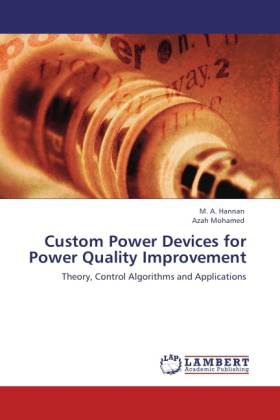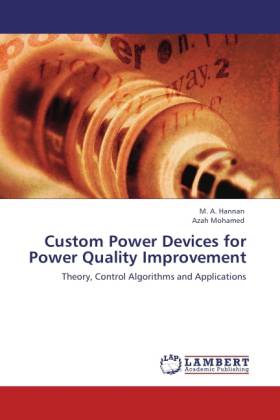
- Afhalen na 1 uur in een winkel met voorraad
- Gratis thuislevering in België vanaf € 30
- Ruim aanbod met 7 miljoen producten
- Afhalen na 1 uur in een winkel met voorraad
- Gratis thuislevering in België vanaf € 30
- Ruim aanbod met 7 miljoen producten
Zoeken
Custom Power Devices for Power Quality Improvement
Theory, Control Algorithms and Applications
M. A. Hannan, Azah Mohamed
Paperback | Engels
€ 58,45
+ 116 punten
Omschrijving
In recent years, sensitive industrial and critical commercial loads have been increasing amount of focus on power quality due to various types of power quality (PQ) problems. To overcome such problems, utility companies have made efforts to improve the quality and reliability of their electric power to the consumers. Traditionally for problems originated on the utility side, the approach has been to work on the customer side to desensitize critical loads while cleaning up the circuit on the utility side. However, with the development of high power semiconductor devices, it has become possible to design various custom power devices which can provide credible solutions to power quality problems on the distribution networks. This book explained the modelling and simulations of custom power devices, namely, the distribution static compensator (D-STATCOM), dynamic voltage restorer (DVR), solid-state transfer switch (SSTS) and solid-state fault current limiter (SSFCL). New control schemes have been implemented to evaluate the performance of these custom power devices in mitigating PQ problems. The developed simulation models will be useful for further PQ studies in a distribution system.
Specificaties
Betrokkenen
- Auteur(s):
- Uitgeverij:
Inhoud
- Aantal bladzijden:
- 148
- Taal:
- Engels
Eigenschappen
- Productcode (EAN):
- 9783846552681
- Verschijningsdatum:
- 29/12/2011
- Uitvoering:
- Paperback
- Afmetingen:
- 152 mm x 229 mm
- Gewicht:
- 227 g

Alleen bij Standaard Boekhandel
+ 116 punten op je klantenkaart van Standaard Boekhandel
Beoordelingen
We publiceren alleen reviews die voldoen aan de voorwaarden voor reviews. Bekijk onze voorwaarden voor reviews.











